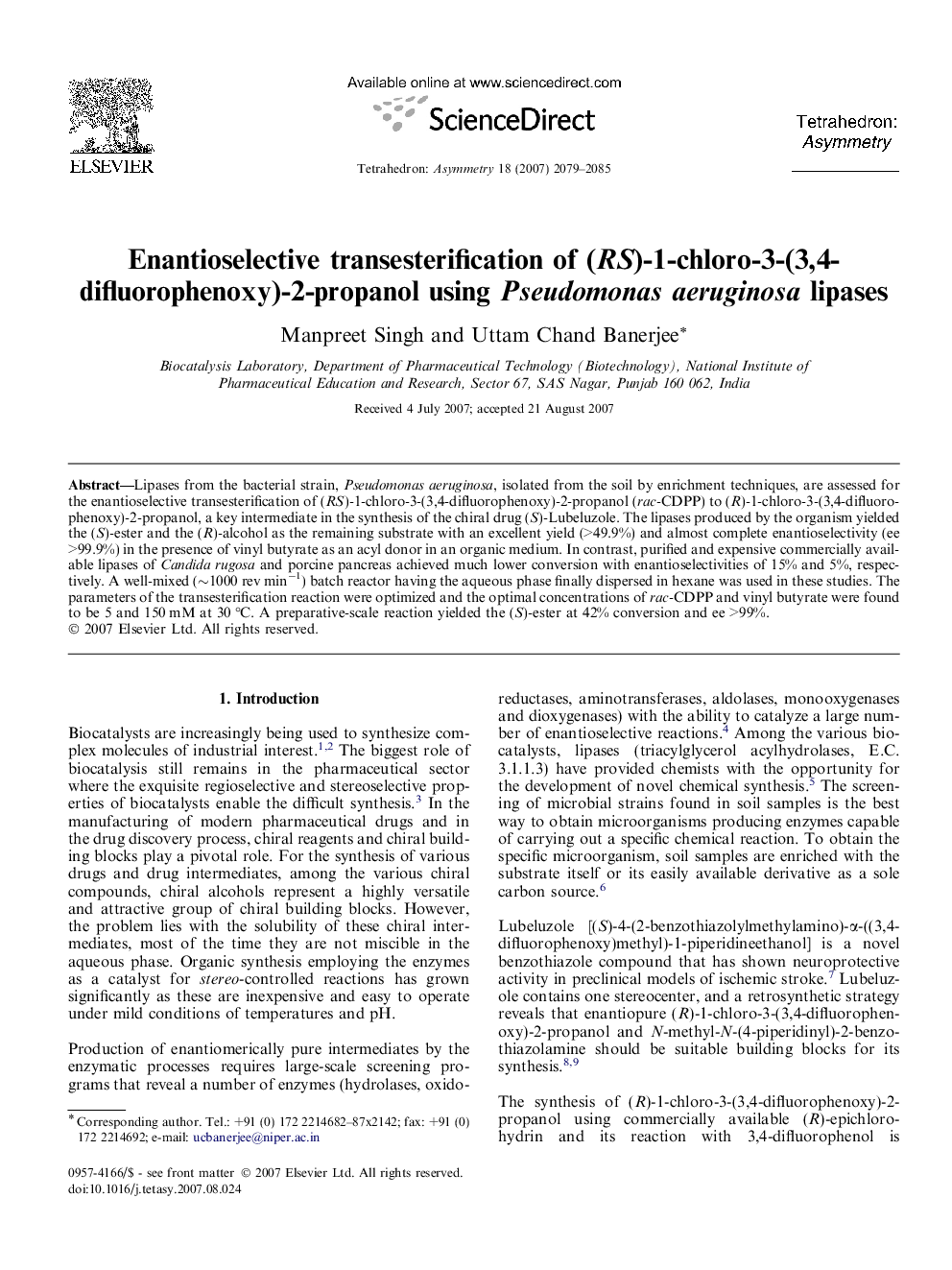| Article ID | Journal | Published Year | Pages | File Type |
|---|---|---|---|---|
| 1347831 | Tetrahedron: Asymmetry | 2007 | 7 Pages |
Lipases from the bacterial strain, Pseudomonas aeruginosa, isolated from the soil by enrichment techniques, are assessed for the enantioselective transesterification of (RS)-1-chloro-3-(3,4-difluorophenoxy)-2-propanol (rac-CDPP) to (R)-1-chloro-3-(3,4-difluorophenoxy)-2-propanol, a key intermediate in the synthesis of the chiral drug (S)-Lubeluzole. The lipases produced by the organism yielded the (S)-ester and the (R)-alcohol as the remaining substrate with an excellent yield (>49.9%) and almost complete enantioselectivity (ee >99.9%) in the presence of vinyl butyrate as an acyl donor in an organic medium. In contrast, purified and expensive commercially available lipases of Candida rugosa and porcine pancreas achieved much lower conversion with enantioselectivities of 15% and 5%, respectively. A well-mixed (∼1000 rev min−1) batch reactor having the aqueous phase finally dispersed in hexane was used in these studies. The parameters of the transesterification reaction were optimized and the optimal concentrations of rac-CDPP and vinyl butyrate were found to be 5 and 150 mM at 30 °C. A preparative-scale reaction yielded the (S)-ester at 42% conversion and ee >99%.
Graphical abstractFigure optionsDownload full-size imageDownload as PowerPoint slide
(R)-1-Chloro-3-(3,4-difluorophenoxy)-propan-2-olC9H9ClF2O2[α]D22=-1.9 (c 1.14, CHCl3)Source of chirality: Enzymatic transesterificationAbsolute configuration: (R)
(S)-1-Chloromethyl-2-(3,4-difluorophenoxy)-ethyl butyrateC13H15ClF2O3[α]D22=+18.9 (c 1, CHCl3)Source of chirality: Enzymatic transesterificationAbsolute configuration: (S)
